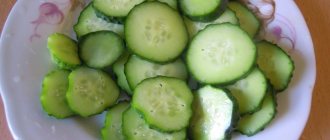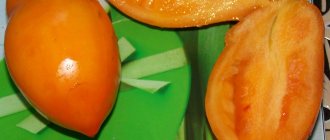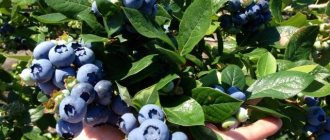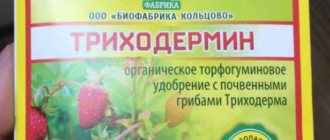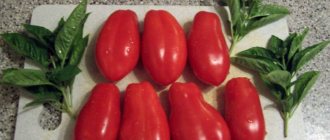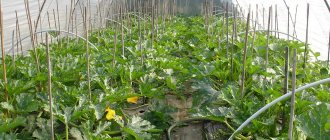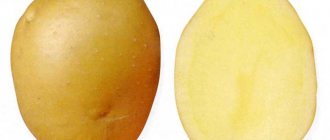Pumpkin crops are planted in the garden by both avid gardeners and beginners. Matilda pumpkin belongs to the nutmeg variety, due to which it has juicy and tender pulp, rich in sugars. Dutch specialists were involved in its breeding. The package with seeds is marked f1 - this indicates that the Matilda pumpkin belongs to the first generation hybrids.
Description of pumpkin variety Matilda F1
Pumpkin Matilda F1, the description and characteristics of which are given below, is currently zoned for the central regions of Russia. But according to gardeners, the variety, resistant to changeable weather conditions, can be grown both in the south of the country and in the northwestern region.
Important! Pumpkin Matilda F1 is a 1st generation hybrid. When creating it, breeders took the best properties of other varieties, including high yield. On the one hand, this moment cannot but rejoice. On the other hand, it makes no sense to harvest seeds yourself. The varietal characteristics most likely will not be preserved next season.
According to the description and reviews of vegetable growers, Matilda F1 pumpkin is a powerful climbing plant. During the season, it forms from 5 to 8 shoots up to 4.5 m long creeping along the ground. The stems are covered with medium-sized heart-shaped leaves. The leaf blades are dark green, slightly wrinkled, with wavy edges.
Large, goblet-shaped flowers are hidden among the foliage. Their corrugated petals are oval, with a pointed outer edge, and are painted in bright yellow tones. Pumpkin Matilda F1 produces 8-10 buds on one shoot. Most of them are female. They are the ones who produce the ovaries. However, experienced vegetable growers advise adjusting the number of inflorescences to avoid overloading the plant.
Reviews of the Matilda F1 variety pumpkin say that its ripening time varies depending on the climatic conditions in the growing region. In general, it reaches biological maturity 95-110 days after emergence. In the State Register of the Russian Federation it is positioned as mid-season. But many seed sellers claim that this is a hybrid with early ripening.
Pumpkin Matilda F1 requires more painstaking care compared to conventional varieties. It needs loose, fertile soils, timely watering, plenty of heat and sunlight.
Irrigation regime
Planted pumpkin seedlings are immediately watered. The next watering is carried out only after 10 days. This stimulates the growth and development of the root system. Subsequently, watering is carried out once a week.
Water consumption per 1 m2 is 5–6 liters. After the pumpkin blooms and the fruits fill, watering is carried out approximately 4–5 days later, 10 liters of liquid per 1 m2. Water should be poured at the root so that splashes do not fall on the leaves and flowers.
Some people make a furrow around the plant to pour water into it. This allows not only to use it economically, but also promotes maximum access of moisture to the root system.
Landing rules
Matilda F1 pumpkin seeds are sown in open beds in the second half of May. It is important that by this time the night temperatures are within 8-10 degrees plus.
Interesting moment! Matilda F1 pumpkin can also be grown using seedlings. To do this, just sow the seeds in a shallow container filled with damp sawdust or loose soil mixed with peat. The seedlings are transplanted to a permanent place 3-4 weeks after germination.
To grow Matilda F1 pumpkin, select a spacious, well-lit area with light soil rich in organic matter. First, dig it up and add compost. Seeds are sown in rows at a distance of 1 m from each other. It is also advisable to leave at least 1 m between the rows. Plant the seed to a depth of 1.5-2 cm.
Advantages and disadvantages of a hybrid
Matilda's advantages:
- fruit compactness;
- abundance of pulp;
- rich taste with a nutty aroma;
- immunity to diseases of melons;
- increased resistance to temperature changes.
Disadvantages include Matilda's hybridity. Its seeds are not suitable for further planting.
Diseases and pests
Pumpkin Matilda F1 has strong immunity to most diseases. But in late summer and early fall, plants can become affected by powdery mildew and downy mildew. For the purpose of prevention, excess shoots are promptly removed, avoiding dense plantings, the beds are kept clean, and treatments are carried out with copper-containing preparations or fungicides.
The most common pest is aphids. An infusion of laundry soap, garlic feathers or onion peels will help get rid of it.
Pros and cons of the variety
The Dutch hybrid has many advantages. The main advantages include:
- stable yield;
- resistance to external factors;
- immunity to diseases;
- a large amount of pulp;
- saturation of fruits with vitamins;
- increased sugar content;
- good keeping quality;
- high transportability.
The disadvantages of the variety include the need for a large area for planting and the inability to obtain its own seeds from a hybrid plant.
Care in the garden
Before placing seedlings in the garden, they must undergo hardening procedures. To do this, the container with the crops must be taken out onto open balconies every day.
The Matilda variety feels good in a spacious place. The seedling planting pattern is meter by meter. If they are placed close to each other, they will begin to experience a lack of nutrients, which will lead to a decrease in yield. When plants become thicker, there is a high risk of pest invasion. This can also cause crop disease. After the seedlings are planted in the beds, they are watered abundantly. In the future, it is not moisturized for 10 days. This way, the growth of the root system is stimulated and the fruits are strengthened.
Then watering is carried out once a week. About 5-6 liters of water are consumed per square meter. During flowering and fruit formation, pumpkin is watered once every 8-10 days. In this case, the amount of water increases to 10 liters. Warm, settled water is suitable for irrigation. It is unacceptable for drops of water to fall on the leaves and flowers, so you need to pour it at the root.
Inexperienced summer residents often make one mistake. They intensively feed the hybrid with nitrogen fertilizer. The plant actually turns green and grows quickly. However, the active growth of green mass leads to the fact that it stops growing and forming ovaries. In this case, you will have to forget about getting the harvest. In the first period of growing the hybrid, preference is given to nitrogen fertilizers, in the second - fertilizing based on phosphorus and potassium.
The pumpkin bush needs to be shaped. To do this, pinch the side shoots and leave a couple of fruits on the plant. Pinching is carried out over 3-4 leaves following the fruit.
You can harvest in mid-August (if the seeds were sown in May). The following signs will indicate that the fruits are ripe:
- the pumpkin peel will acquire a characteristic color;
- the stalk will dry out and harden;
- stems and shoots will begin to turn yellow and dry out.
After harvesting, the pumpkin can be sent for storage. It is recommended to eat fruits that have been sitting for some time. This way they will ripen completely and the pulp will be more tasty. Reviews from summer residents about the Matilda hybrid mention that the fruits acquire a nutty aroma and amazing taste after they have been left for 2 weeks.
Hybrid Matilda F1 is a variety that is famous for its excellent characteristics. If you love pumpkin and want to grow it, you definitely need to take a closer look at this variety. Before starting planting work, study all of the above information. Rest assured: the harvest will definitely please you!
Farmer reviews
Reviews about Matilda are mostly positive. This hybrid has no serious disadvantages.
Valeria, Tula: “I’ve been growing Matilda for four years now. A very productive and tasty hybrid. Four bushes are enough for sale, for yourself, and for your children. Fruits with a lot of pulp, very few seeds. There really is a nutty flavor, but only if the fruits are fully ripened on the bush.”
Alexander, Smolensk: “Last year I planted Matilda after reading positive reviews about her. The hybrid did not disappoint. Indeed, tasty and fruitful. I like larger pumpkins, so I leave only three ovaries on the bush. Each fruit weighs 4–5 kg and is pear-shaped, as in the photo.”
Varieties for the Moscow region
In the Moscow region, the climatic situation is unstable, so you need to select pumpkin varieties and species that are resistant to atmospheric changes.
Melon
One of the sweetest types with a pronounced melon aroma. Full ripening of the fruit occurs 100 days after the appearance of the first shoots. The fruit size is large, weight can reach 30 kg. Valuable properties are drought and frost resistance, as well as a pleasant taste. Melon pumpkin can be eaten both as part of various dishes and fresh.
Zorka
One of the most delicious melons, which is characterized by the maximum content of carotene and sugar. This is a mid-season variety with strong stems and large fruits. The shape is round and slightly flattened. The skin color is grayish-green with spots and stripes of a yellow tint. The dense and juicy pulp has a bright and rich yellow color.
Chit
This species is represented by medium-sized fruits weighing up to three kilograms. Medium early ripening - about 120 days. The skin has a dense woody texture and a very light gray, almost white color. The pulp is juicy and dense, contains a lot of sugar and is light yellow in color. This variety is highly resistant to common diseases.
Figolifolia
This variety is also known as Blackseed. The leaves are shaped like fig leaves. The solid, pentagonal stems can reach 20 meters in length. The shape of the fruit is oval and elongated. The color of the peel is light green or white with the presence of stripes and spots of dark green color. The seeds are black, twice as large as watermelon seeds.
Almond
High-yielding species with medium ripening periods. The fruits are slightly flattened and round in shape, their surface is smooth, with slight ribbing. During the ripening process, the shade of the peel gradually changes from green to brown-orange. There are light brown spots and stripes on the surface.
Pastille champagne
A variety completely different from others. It has an elongated elliptical shape. The skin is of medium thickness and pinkish in color. The juicy orange pulp occupies almost the entire internal space of the vegetable and has an attractive vanilla aroma.
Russian
An early-ripening, frost-resistant and high-yielding variety that is very popular among domestic gardeners. Medium-sized fruits weighing about 3 kg are formed on strong vines. The shape of the fruit is similar to a pear or spinning top. Beneath the orange skin lies yellow, tender flesh with a melon scent.
Sweet pie
This is a table variety characterized by early ripening. It has round, flattened and faceted orange-red fruits. The juicy and crispy flesh has a pleasant yellow color. In any weather conditions, a stable harvest is guaranteed.
Hokkaido
This variety came from Japan. Pumpkin fruits ripen early and are pear-shaped. The weight is small - only 1.5-2 kilograms. Their skin is thin. In color it can be red, green, gray and bright orange. The juicy pulp with a nutmeg aroma has a rich yellow-orange color.
Features of agricultural technology
Pumpkins are best grown in a sunny location.
Basic recommendations for growing pumpkins:
- It is better to choose a sunny place;
- the seedling method is appropriate in areas with a cool climate;
- Matilda pumpkin needs regular watering, fertilizing, and weed removal.
It is important to remember that it is best to grow pumpkins in soil with plenty of compost and humus. The place where you plan to plant vegetables needs to be dug up in the fall and immediately applied fertilizer from rotted manure (up to 6 kg) and superphosphate (40-60 g) per 1 square meter. m.
Harvesting
Ripe fruits are harvested in mid-August. To determine the maturity of the fruit, first of all, you need to pay attention to the color of the peel; it should have a color typical for this hybrid. The stalk dries out completely and hardens, and the stems turn yellow and dry out.
The collected fruits can be stored for about 4 months. Many people note that after 2-3 months, the pumpkin acquires a richer taste and aroma.
butternut squash
- Butternut squash is one of the most beloved members of the pumpkin family among gardeners. She is originally from Mexico. It got its name for its subtle nutmeg aroma.
- Its popularity is associated with its taste, rich color of pulp, and long shelf life. That’s why nutmeg pumpkin is also called winter squash. After resting for a long time, its flesh acquires a more saturated color. But it is not recommended to store vegetables for more than six months.
- This species includes many varieties. They all have different shapes and colors. Most varieties have elongated fruits - pear-shaped, oval, cylindrical.
- A distinctive feature of this group of plants is the pentagonal stalk of the pumpkin. But all representatives have a thin peel that is easy to peel.
- Butternut squash is best suited for growing in the southern regions of the country. In central Russia you can plant it using seedlings or in greenhouses.
- Almost all varieties are late ripening.
Spanish guitar
- The plant received its name for the unusual shape of its fruits, weighing up to 8 kg. The length of vegetables depends on the fertility of the soil and ranges from 70-100 cm, diameter - about 17 cm.
- This is a mid-season variety that has good shelf life and tastes like apricots. There are few seeds in the dense pulp; they are located only in the thickened part of the vegetable.
- The skin is thin and the inside of the pumpkin is orange. There are no ribs on the surface of the fruit.
- The variety is suitable for consumption raw, but has not yet become widespread in our country.
- The first harvest of candied pumpkin is harvested 4-5 months after the sprouts appear. The variety is classified as mid-late.
- The fruits are light brown in color and have a rounded-flattened shape. After maturation, their average weight is 5 kg. The inside is sugary, crispy, and orange in color.
- Candied pumpkin is widely used for the manufacture of confectionery, medicinal and baby food.
- The harvested crop can be transported and stored for a long time.
Vitamin
- A late variety of nutmeg pumpkin, the fruits of which fully ripen no less than 3.5 months after the appearance of the first shoots. One plant usually produces 2-3 fruits.
- Oval ribbed pumpkins, weighing up to 5 kg. The peel is thin, orange in color. The pulp is juicy orange, dense and crispy. It tastes sweet. Widely used for making juice, confectionery, and also suitable for fresh consumption.
- Fruits can be stored, but for a short period of time.
- A variety with an average period of fruit ripening, intended for planting in warm regions of Russia. On average, the first harvest is harvested 4 months and 10 days after the first shoots appear.
- The bushes form green-gray pumpkins of a flattened round shape, weighing 6-10 kg. Their flesh is loose, orange in color, and pleasant to the taste. After ripening, the peel acquires a green, gray color.
- The variety is suitable for transportation over long distances. The fruits do not crack or rot.
- At low air temperatures, pumpkins can be stored for a long time - about 1 year.
Muscat de Provence
Muscat de Provence
- Bred by French breeders.
- The first fruits of Muscat de Provence can be enjoyed 110 days after emergence.
- They have a round, flattened shape and gain weight of no more than 4 kg.
- The outside of the fruit is orange in color with many ribs.
- Inside, the pumpkin is orange in color, dense in consistency, sweet and juicy.
- Vegetables can be harvested before they are fully ripe and stored for a long time at a temperature of 8-10 C.
- The plant has another equally well-known name - butternut, or moschata. It was obtained by Israeli scientists by crossing an African pumpkin and a variety of butternut squash.
- One of the few representatives of the group that ripens in 3-3.5 months.
- The plant bears fruit best when no more than 5 fruits are left on one bush, which weigh 1-1.2 kg when ripe.
- The vegetable itself has an elongated shape and looks like a zucchini. The color of the dense peel and pulp is yellow. The fruit inside is fibrous, juicy, with a light nutty aroma and a small amount of seeds.
- The plant has one drawback - it requires proper care to produce tasty, aromatic fruits.
- Butternuts can be picked before they are fully ripe. Vegetables ripen outside the bush, which allows them to be stored longer. They are usually picked at the end of summer, beginning of autumn, if there is a risk of cold weather.
- The fruits can be used both for preparing various sweet dishes and added to meat. Lovers of raw vegetables can use it in its unprocessed form.
butternut squash
butternut squash
- Butternut squash is one of the most beloved members of the pumpkin family among gardeners. She is originally from Mexico. It got its name for its subtle nutmeg aroma.
- Its popularity is associated with its taste, rich color of pulp, and long shelf life. That’s why nutmeg pumpkin is also called winter squash. After resting for a long time, its flesh acquires a more saturated color. But it is not recommended to store vegetables for more than six months.
- This species includes many varieties. They all have different shapes and colors. Most varieties have elongated fruits - pear-shaped, oval, cylindrical.
- A distinctive feature of this group of plants is the pentagonal stalk of the pumpkin. But all representatives have a thin peel that is easy to peel.
- Butternut squash is best suited for growing in the southern regions of the country. In central Russia you can plant it using seedlings or in greenhouses.
- Almost all varieties are late ripening.
Spanish guitar
Spanish guitar
- The plant received its name for the unusual shape of its fruits, weighing up to 8 kg. The length of vegetables depends on the fertility of the soil and ranges from 70-100 cm, diameter - about 17 cm.
- This is a mid-season variety that has good shelf life and tastes like apricots. There are few seeds in the dense pulp; they are located only in the thickened part of the vegetable.
- The skin is thin and the inside of the pumpkin is orange. There are no ribs on the surface of the fruit.
- The variety is suitable for consumption raw, but has not yet become widespread in our country.
Tsukatnaya
Tsukatnaya
- The first harvest of candied pumpkin is harvested 4-5 months after the sprouts appear. The variety is classified as mid-late.
- The fruits are light brown in color and have a rounded-flattened shape. After maturation, their average weight is 5 kg. The inside is sugary, crispy, and orange in color.
- Candied pumpkin is widely used for the manufacture of confectionery, medicinal and baby food.
- The harvested crop can be transported and stored for a long time.
Vitamin
Vitamin
- A late variety of nutmeg pumpkin, the fruits of which fully ripen no less than 3.5 months after the appearance of the first shoots. One plant usually produces 2-3 fruits.
- Oval ribbed pumpkins, weighing up to 5 kg. The peel is thin, orange in color. The pulp is juicy orange, dense and crispy. It tastes sweet. Widely used for making juice, confectionery, and also suitable for fresh consumption.
- Fruits can be stored, but for a short period of time.
Marble
Marble
- A variety with an average period of fruit ripening, intended for planting in warm regions of Russia. On average, the first harvest is harvested 4 months and 10 days after the first shoots appear.
- The bushes form green-gray pumpkins of a flattened round shape, weighing 6-10 kg. Their flesh is loose, orange in color, and pleasant to the taste. After ripening, the peel acquires a green, gray color.
- The variety is suitable for transportation over long distances. The fruits do not crack or rot.
- At low air temperatures, pumpkins can be stored for a long time - about 1 year.
Muscat de Provence
Muscat de Provence
- Bred by French breeders.
- The first fruits of Muscat de Provence can be enjoyed 110 days after emergence.
- They have a round, flattened shape and gain weight of no more than 4 kg.
- The outside of the fruit is orange in color with many ribs.
- Inside, the pumpkin is orange in color, dense in consistency, sweet and juicy.
- Vegetables can be harvested before they are fully ripe and stored for a long time at a temperature of 8-10 C.
Walnut
Walnut
- The plant has another equally well-known name - butternut, or moschata. It was obtained by Israeli scientists by crossing an African pumpkin and a variety of butternut squash.
- One of the few representatives of the group that ripens in 3-3.5 months.
- The plant bears fruit best when no more than 5 fruits are left on one bush, which weigh 1-1.2 kg when ripe.
- The vegetable itself has an elongated shape and looks like a zucchini. The color of the dense peel and pulp is yellow. The fruit inside is fibrous, juicy, with a light nutty aroma and a small amount of seeds.
- The plant has one drawback - it requires proper care to produce tasty, aromatic fruits.
- Butternuts can be picked before they are fully ripe. Vegetables ripen outside the bush, which allows them to be stored longer. They are usually picked at the end of summer, beginning of autumn, if there is a risk of cold weather.
- The fruits can be used both for preparing various sweet dishes and added to meat. Lovers of raw vegetables can use it in its unprocessed form.
Pear: description of the 24 best varieties with their photos and reviews from gardeners

